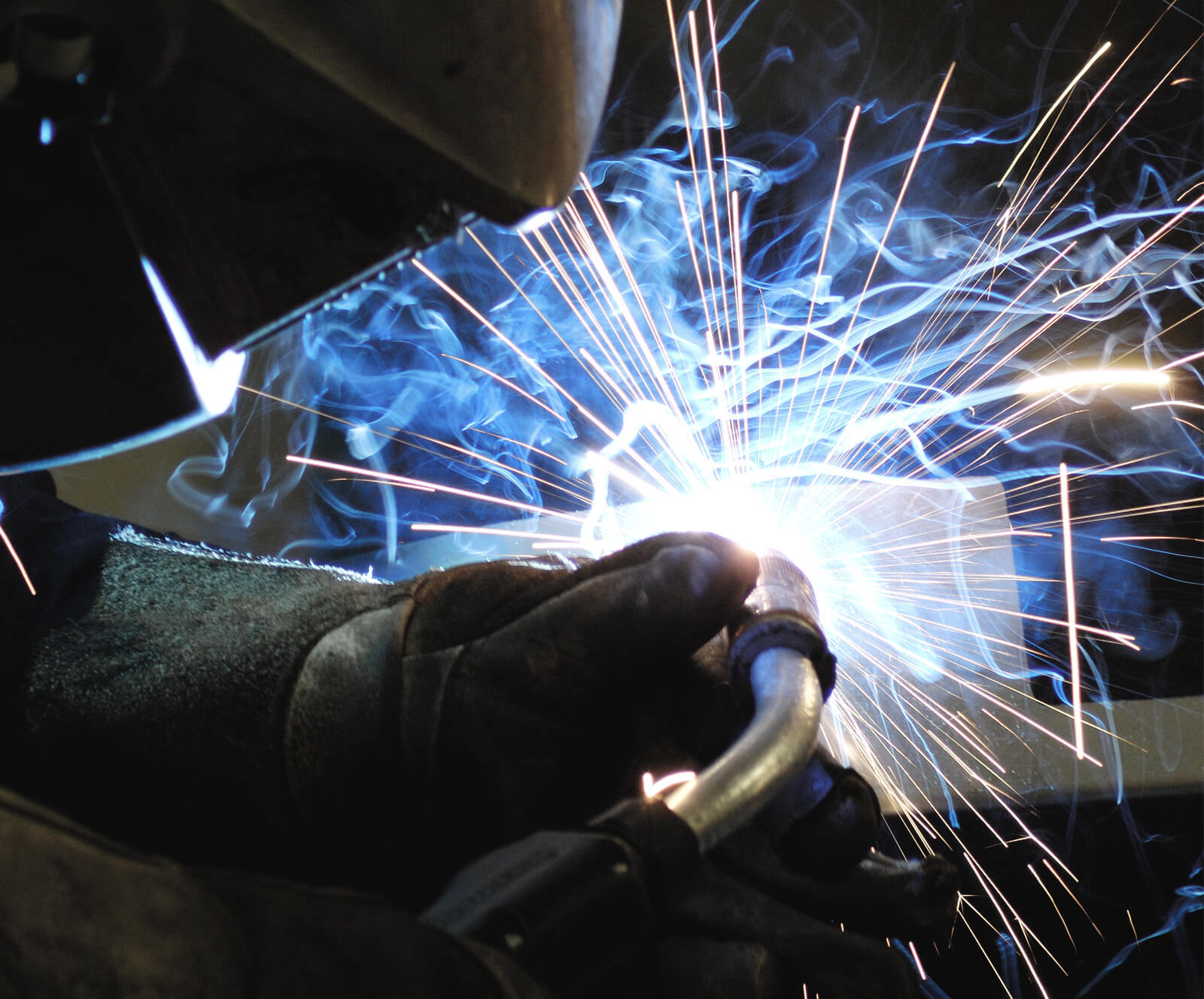Argon, Industrial Grade
Used in the production, processing and fabrication of metals, this industrial grade argon is available either as a compressed gas or as a cryogenic liquid

Ar
Inert to all materials at all temperatures and pressures. Lower thermal conductivity than most other gases. Low ionising potential allows easy formation of a welding arc without reacting with the metal being welded. In cryogenic format, liquid argon is often abbreviated to LAR.
Argon (Industrial Grade) is an inert, non-flammable compressed gas used widely for welding and metal fabrication, shielding sensitive processes, and protecting reactive materials from atmospheric contamination. Supplied in high-pressure cylinders for New Zealand industry, it delivers stable arc starts, reduced spatter and cleaner welds when used as a primary or balance gas in common shielding mixes.
GTAW/TIG welding (stainless, aluminium, copper alloys): pure argon shielding for clean, controlled arcs and excellent puddle visibility.
GMAW/MIG welding: base component in many aluminium and stainless programs; often blended with helium or active components depending on process.
Back-purging & inerting: displacement of air in pipework, vessels and gloveboxes to protect weld roots and sensitive components.
Metals processing & laboratory support: inert atmosphere for melting, atomising, sintering and general purge applications.
For critical processes requiring specific impurities (O₂, H₂O, THC) at ppm/ppb levels, select specialty or higher-purity grades.
Local NZ supply & delivery with fast turnaround to fabrication shops and project sites.
Reliable cylinder fleet & stewardship—return cylinders for safe refilling and end-of-life processing.
Process know-how across welding and industrial applications to help specify the right grade and flow control.
Inert & non-reactive: helps prevent oxidation and nitridation during welding and thermal processing.
Clean arc initiation & stability: consistent shielding improves bead appearance and reduces post-weld clean-up.
Versatile: use neat for TIG and aluminium MIG, or as the base gas in multi-component blends tailored to your procedure.
Classification: compressed gas; non-flammable and chemically inert, but can displace oxygen in poorly ventilated areas.
Asphyxiation risk: high local concentrations may lead to dizziness, unconsciousness or worse; ensure good ventilation in enclosed spaces.
Storage: keep cylinders upright, restrained, dry and well-ventilated, out of direct sun and away from heat.
Handling: never drag, drop or roll cylinders; use a rated cylinder trolley; keep valve protection in place when not in use.
PPE (typical): safety glasses, leather gloves and safety boots for normal handling; use additional respiratory protection if ventilation is inadequate for confined tasks.
Fire: not combustible; if involved in a fire, keep cylinders cool from a protected location and evacuate if cylinders cannot be cooled.
Leaks: move the cylinder (only if safe) to a ventilated remote area; do not attempt to repair valves or safety devices yourself.
Transport cylinders secured and upright in a ventilated vehicle compartment; keep valves closed and capped.
Brief drivers/contractors on gas hazards and emergency actions; isolate from ignition sources and heavy loose gear.
At site, position cylinders where they are protected from traffic, not blocking exits, and accessible for change-outs.
Flow rates: optimise to maintain a stable envelope without turbulence; excessive flow increases gas use and can entrain air.
Torch angle & stick-out: keep consistent to avoid pulling air into the shielding zone.
Joint prep & cleanliness: remove oxides, oils and moisture to get full benefit from inert shielding.
Purge dams for stainless/titanium: use argon back-purging to protect weld roots and prevent sugar/oxidation.
Procedure qualification: align shielding gas selection with WPS/PQR requirements and consumable manufacturer data.
No. Argon is non-flammable and inert. The primary hazard is asphyxiation if it displaces oxygen in enclosed spaces.
Industrial grade supports common welding and purge tasks. Specialty grades specify tighter impurity limits for critical processes and analytical work.
Yes. Argon is ideal for root protection; control purge flow and venting to avoid turbulence and contamination.
Upright, restrained, dry and ventilated, out of direct sun/heat and away from traffic or exit routes.
Use a pressure-rated regulator compatible with argon service and cylinder connection standards; verify flow capacity for your torch/system.
| Size | Product code | Volume / m³ | Weight (full) / kg | Pressure / kPa | Outlet connection | Availability |
|---|---|---|---|---|---|---|
| D | 2.1 | 14.5 | 20,000 | Type 10 | NZ wide | |
| F | 5 | 80 | 20,000 | Type 10 | NZ wide | |
| G | 10.5 | 80 | 20,000 | Type 10 | NZ wide | |
| 14-pack | 147 | 1015 | 20,000 | Type 10 | NZ wide | |
| 16- pack | 240 | 1544 | 30,000 | Type 10 | NZ Wide |
UN number: 1951
Scroll
| Contact us direct for more information about our bulk and cryogenic liquids range |
| Appearance | Odour | Flammability |
|---|---|---|
| AppearanceColourless gas | OdourOdourless | FlammabilityNon flammable |
2.2
 Non-flammable non-toxic gas 2.2
Non-flammable non-toxic gas 2.2
Contact our professional team for questions about products, pricing, creating an account & more.